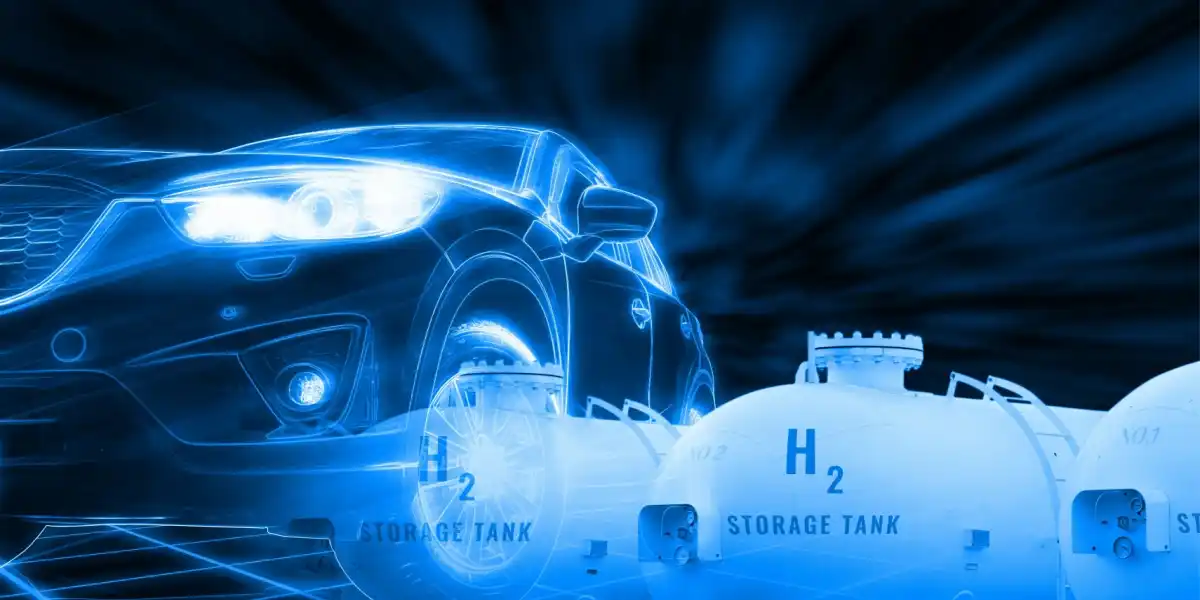
Apr 14, 2023
Blog Energy & Sustainability The burgeoning hydrogen economy
In the near future, hydrogen could replace oil as a green energy source. The 2020’s are already being heralded as “the decade of hydrogen”, with the element primed to become a substitute for oil, gas and coal. Technological leaps, generous government policies and falling costs are the main causes of this shift.
The urgent need for clean energy is driving the market for hydrogen fuel cells to extraordinary heights. BCC Research predicts the global market for hydrogen fuel cells to reach 19.5 billion by 2027, with a CAGR of 21% between 2022-2027.
The need for clean energy
It goes without saying that climate change is the key driver in the increasing demand for clean energy. Hydrogen is emerging as a viable solution; by 2050, the World Economic Forum estimates that hydrogen could account for about 12% of global energy use.
Fossil fuels are the single biggest contributor to climate change, with the United Nations estimating they account for more than 75% of global greenhouse gas emissions, more than 80% of global energy production and about 90% of all carbon dioxide emissions. Despite this, clean alternatives are gaining ground, with about 29% of electricity now coming from renewables.
Another factor driving the demand for clean energy is the need for energy independence. Many countries are looking to reduce their dependence on foreign sources of fossil fuels, which can be subject to price fluctuations and supply disruptions. By investing in clean energy sources, countries can reduce their dependence on foreign fossil fuel sources and increase their energy security.
Global energy policies are also creating favorable conditions for the growth of the hydrogen economy. The Paris Agreement created ambitious goals for a greener world, and countries have committed to increasing efforts towards renewable energy to meet these goals.
All these factors are leading to an increased demand for clean energy and an increased investment in renewable energy sources such as solar, wind, geothermal, hydro, and biomass.
Government support and funding
Governments around the world are offering funding and support for the development of hydrogen technologies and infrastructure, which is helping to drive the market forward.
Over the last year, nine more governments across the world have adopted a hydrogen strategy. That means there are now twenty-six governments that have committed to adopting hydrogen as a clean energy vector in their energy system. Consequently, deployment of hydrogen production technologies targets are steadily growing.
The major hydrogen-producing countries include the United States, Russia, China, Canada, Japan, Germany, South Korea, France, Saudi Arabia, and Australia. These countries are known for their large-scale hydrogen production using methods such as natural gas reforming, coal gasification and electrolysis. However, there are other countries that are investing in hydrogen production as it is considered to be a clean energy source.
Advancements in technology
The production, storage, and distribution of hydrogen would not be where it is today without some important technological strides being made. These developments are helping make hydrogen a more viable energy source.
Some key advancements include:
In terms of storage, other advancements include:
In terms of distribution, some developments have been made:
Overall, these advancements are pushing hydrogen into wider availability, making it an increasingly viable alternative to fossil fuels.
Learn more about the hydrogen economy
BCC Research’s report Global Hydrogen Economy: Merchant Hydrogen and Hydrogen Purification Technologies dives into the technological makeup of the hydrogen industry. Providing market data and forecasts as well as in-depth analysis, the report acts as an invaluable guide for those with stakes in the sector.
Download your complimentary report overview here.
Alternatively, membership with the BCC Research library grants users access to the full scope of reports within our energy category. Get in touch today to find out more.

Olivia Lowden is a Junior Copywriter at BCC Research, writing content on everything from sustainability to fintech. Before beginning at BCC Research, she received a First-Class Master’s Degree in Creative Writing from the University of East Anglia.

Electrical switches—devices that control the flow of electricity—are the backbon...

As the world accelerates toward net-zero emissions, hydrogen, and ammonia have e...

Hydrogen technology is widely used across industries like glass, fertilizer, met...

We are your trusted research partner, providing actionable insights and custom consulting across life sciences, advanced materials, and technology. Allow BCC Research to nurture your smartest business decisions today, tomorrow, and beyond.
Contact UsBCC Research provides objective, unbiased measurement and assessment of market opportunities with detailed market research reports. Our experienced industry analysts assess growth opportunities, market sizing, technologies, applications, supply chains and companies with the singular goal of helping you make informed business decisions, free of noise and hype.